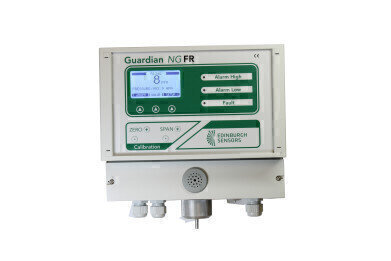Gas Detection
Methane detection in mine ventilation systems
Mar 14 2018
There is inherent danger in creating and operating within subterranean tunnels which results in a high mining date rate, over 5 deaths per day due to mining accidents recorded in China alone. This is a worldwide problem, with high-profile incidents in the last 10 years occurring in New Zealand, Russia and the US among others.
The most common source of mining accidents, particularly in coals mines, is an explosion of methane gas. These explosions are the result of the concentration of a methane leak in a closed environment. If methane reaches a critical concentration in the air, which is between 5 to 15% it can react with the oxygen to form carbon dioxide, water and heat. This reaction needs a source of ignition to begin. This doesn’t necessarily have to be an open flame, sparks from mining processes, or a high localised temperature (over 600°C) on hot equipment, can be enough to cause an explosion.
Methane release is unavoidable in coal mines as it is always present. The problem with methane explosions is not just restricted to active mining sites either. Many abandoned also leak methane gas, potentially into residential areas where it can still reach high enough concentrations to be at risk of explosion.
The risk of methane gas accumulation in mines means that gas sensing is an essential part of any mining safety network. To reduce the risk of methane build up, ventilation equipment is used in mines to keep methane concentrations below the explosion limit.
One sensor range that is suited to the critical safety issue of detecting methane outgassed from mines is Edinburgh Sensor’s Guardian NG series from Edinburgh Sensors. Capable of detecting methane concentrations between 0-1%, these infra-red based sensors are sensitive enough to detect even the smallest of leaks.
The Guardian NG series is designed as an easy-to-use, standalone gas sensor that can continually monitor and log methane concentrations in conditions where the gas is present between 0–100% volume, with the most sensitive sensor being able to detect between 0-1%. The sensor has an impressively rapid 1.5 minute warm-up time and is capable of operating in a range of conditions varying from 0-95% relative humidity and 0-45°C.
What makes the Guardian NG series particularly well-suited to mining applications is they can be easily integrated in to existing ventilation equipment. As the sensor itself is electronic and could generate sparks, it should be situated on the surface of the mine measuring gas concentrations released from the mine vents. This provides a guarantee that ventilation systems are working and can also be used to monitoring the off-gassing of old mining sites.
Infra-red sensors offer some advantages over the traditional heat of combustion sensors that are typically used for mining applications and are commonly used in other areas where methane detection is required as methane absorbs infra-red light very strongly at characteristic wavelengths.
One huge advantage of IR sensors in safety applications is the fail-safe nature of the technology. If the IR lamp, and therefore the sensor, fails then no signal is received by the detector, which is an equivalent effect to the sensor detecting a high methane concentration. As a result, a full alarm would sound, notifying staff that the sensor has failed and there is a potentially dangerous situation.
With its sensitivity and accuracy for methane detection and short response time of less than 30 seconds from sample injection, the Guardian NG series offers one answer to the critical safety issue of explosion prevention in mining.
Digital Edition
IET 34.2 March 2024
April 2024
Gas Detection - Biogas batch fermentation system for laboratory use with automatic gas analysis in real time Water/Wastewater - Upcycling sensors for sustainable nature management - Prist...
View all digital editions
Events
Apr 30 2024 Melbourne, Australia
Apr 30 2024 Birmingham, UK
May 03 2024 Seoul, South Korea
May 05 2024 Seville, Spain
May 06 2024 Minneapolis, MN, USA


















